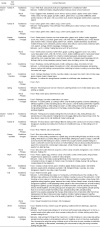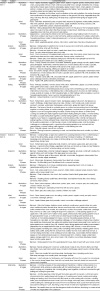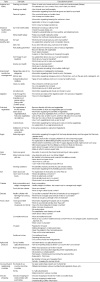Abstract
Objectives
The study purpose is to develop a content system for a healthy dietary education program for after-school care in lower grade in elementary school.
Methods
The contents of healthy dietary education in the 2015 revised curriculum and textbooks and the major education programs related to dietary life that are currently used in elementary school education were analyzed. Focus group interviews were held with field experts related to lower grade in elementary care class. Accordingly, the structuring of the education area and the detailed education contents were systematized.
Results
From the analysis results, the contents of curriculum, textbook, and administrative department were classified as hygiene safety, health, and culture. The goal of the educational content system was divided into three areas: nutritional dietary life, food hygiene and health, and food culture. The subjects consisted of dietary balance, healthy body weight, digestion and absorption, food hygiene, Korean agricultural products, traditional food, and table manners. The curriculum was composed of 12 content elements.
Figures and Tables
Acknowledgments
This research was supported by a grant from Korea Health Promotion Institution in 2016.
References
1. Kim SD, Yang AK. A study on the recent movement & implications of the elementary school after- school child care service policy in Korea & Japan. Korean J Jpn Educ. 2014; 18(2):41–60.
2. Kim YK, Park JY, Song HR. A study on the development and management of a childcare service program for the dual-income family: a focus on the service of nongovernmental institutions. Fam Environ Res. 2010; 48(5):145–155.

3. Seoul Dongjak Gwanak District Office of Education. Guidance on the operation of elementary care classroom [Internet]. Seoul Dongjak Gwanak District Office of Education;2015. cited 2015 May 20. Available from: http://dgedu.sen.go.kr/CMS/notice/notice01/notice0104/1266182_5090.html.
4. Lee SJ, Hong JH. Childhood Obesity Prevention Programs and Challenges in After-school Care of Elementary Schools-. Korea Health Promotion Institution;2016. 11. Report No. 2508-4844.
5. Her ES. Interrelations among snack preference, purchasing behaviors and intake in upper grade elementary school students: compared by the gender and TV watching time. Korean J Community Nutr. 2013; 18(5):429–441.
6. Mo YS. Evaluation of nutrition education effectiveness to reduce sodium intake for elementary school students based on health belief model [master's thesis]. Yonsei University;2012.
7. Kim JW, Lee EJ. Evaluation of dietary habits and dietary life competency of elementary school students. J Korean Pract Arts Educ. 2014; 27(4):17–37.
8. Paik JJ, Lee HS. Dietary behaviors, food preferences and its relationships with personality traits in sixth grader's of elementary school. Korean J Community Nutr. 2004; 9(2):135–141.
9. Kang MH, Yoon KS. Elementary school students' amounts of sugar, sodium, and fats exposure through intake of processed food. J Korean Soc Food Sci Nutr. 2009; 38(1):52–61.

10. Seong EJ. Establishment of roadmap for intervention study of adolescent obesity to prevent and control metabolic disease. Cheongju Disease Management Headquarters;2016. 3. Report No. 11-1352173-000295-01.
11. OH KJ. Recognition of parents on special act for child protection in food safety and management: focused on elementary school in Gyeonggi province area [master's thesis]. Chung-ang University;2014.
12. Lee YS. Development of dietary life education program through integral approach [master's thesis]. Daegu National University of Education;2009.
13. Yun JS, Lyu ES. Satisfaction and perception of nutrition education by elementary school students. J Korean Soc Food Sci Nutr. 2012; 41(9):1259–1264.

14. Lee SJ, Hong JH. Childhood Obesity Prevention Programs and Challenges in After-school Care of Elementary Schools-. Korea Health Promotion Institution;2016. 11. Report No. 2508-4844.
15. Lee Y, Park HN. The effectiveness of Na education program in elementary school: six month follow-up study. Korean J Community Nutr. 2010; 15(5):603–613.




 PDF
PDF ePub
ePub Citation
Citation Print
Print










 XML Download
XML Download